|
|
|
Книги издательства «Idea books»

|
The famous Russian collector and literary scholar Nikolai Khardzhiev (1903-1996) was a close friend and admirer of the modern painters, poets and philosophers of his time. Often buying directly from the artists and their families, from the late 1920s Khardzhiev collected work by such masters of the Russian avant-garde as Kazimir Malevich, Mikhail Larionov, Olga Rozanova, El Lissitzky, Vasily Chekrygin, Mikhail Matyushin and Vladimir Tatlin, thus compiling one of the greatest collections of this period. As the Soviet regime began to clamp down on Futurism and Suprematism, Khardzhiev sought to acquire anything that would allow him to one day write a history of these movements, and his archives also included manuscripts and rare books, as well as his own correspondence with artists. Russian Avant-Garde provides a full overview of the unique Khardziev-Chaga collection, which has been housed at the Stedelijk Museum Amsterdam since 1997. The collection contains numerous works on paper, including gouaches, watercolors, Futurist book cover designs, sketches, studies and archival photographs. These items, many of which have never previously been reproduced, greatly deepen our understanding of the sheer range and prolificness of these monumental artists, and Khardzhiev's valiant determination to preserve their work. |

|
Language: English Brand New Book. The works in Animations endow unlikely objects with unexpected and uncanny life. During its century-plus history, animation has continually absorbed, hybridized, mutated and melded disciplines and techniques, undergoing both commercial exploitation and artistic exploration. The latter is documented here, focusing on the cross-continental exchange of artists from around the world who are dialoguing in the collective languages of animation. 28 artists are featured here, including Haluk Akakce, Francis Alÿs, William Kentridge, Kristen Lucas, Pierre Huyghe, Liam Gillick and Liliana Porter, demonstrating the unique ways in which contemporary visual practitioners address animation as a medium and subject. |

|
The Dutch graphic artist M.C. Escher (1898-1972) is known and loved worldwide for his plane-filling patterns and prints of buildings that are optical illusions. Eschers graphic work made him internationally famous but few people know about the influence of Islamic art on his work. His fascination with it began during two visits to Southern Spain in 1922 and 1936. This book demonstrates how the graphic artist transformed the geometric patterns of Islamic art into his renowned mathematical art. |

|
Through more than 50 portraits of inspiring people who tell the story behind their tattoos, photographer Ralf Mitsch delves into a personal fascination with adorning ones own body with permanent ink. As a teenager in the 1980s, he noticed how those who had tattoos generally came from social strata with little to do with ruling class norms, or just wanted to rebel. Their decorated skin told a kind of life story in an ever-changing patchwork. Nowadays, tattoos are a fashion item, worn by people from all walks of life. A person covered in tattoos is a painting, full of surprises. Mitsch wants to get under the skin and discover the real motivation: is it about documenting their lives, or simply an addiction? |
|